How & When To Plant Sweet Potatoes: 5 Simple Steps (With Pictures)
-
- Last updated:
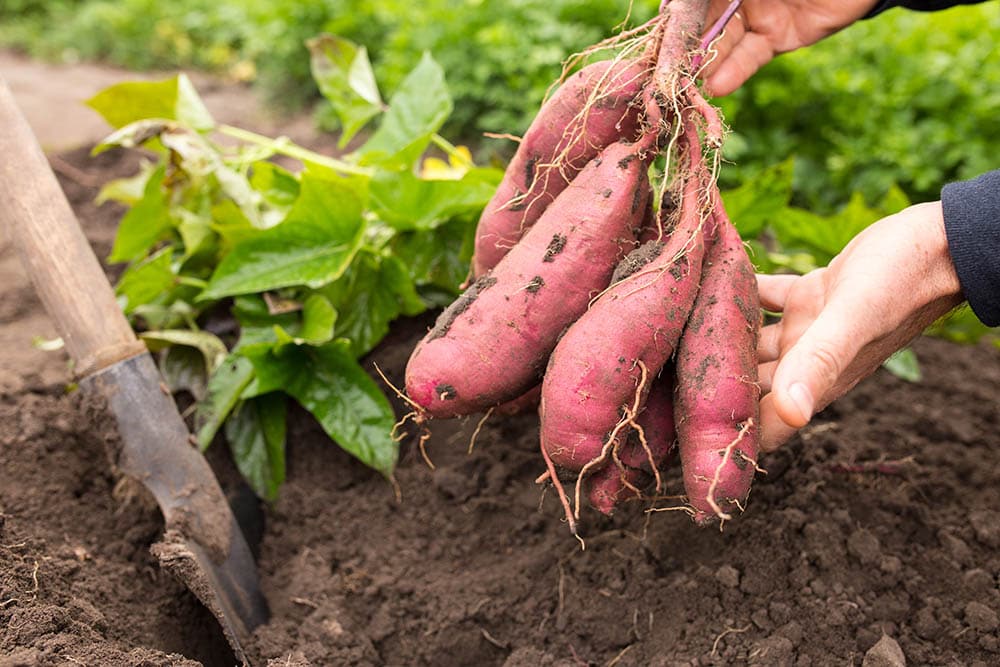
Sweet potatoes are a fall favorite in many places. They are versatile and colorful vegetables that show up just in time for the holidays. If you love sweet potatoes, you can try your hand at growing your own. Sweet potatoes grow well in southern climates and can also be grown up north if you nail the timing. In the right conditions, sweet potatoes grow extremely well and are very low maintenance.
This guide will cover what you need to grow sweet potatoes, including a step-by-step plan on how to start growing them, common pests to look out for, tips for harvesting, and the best time to plant. The information here will cover everything you need to start growing your own sweet potato crop and get a great result just in time for fall.

How To Plant Sweet Potatoes
Preparation
The easiest way to grow sweet potatoes is from slips. Slips are sweet potatoes that have sprouted and are ready to plant. You can order sweet potato slips from local nurseries or even online. Getting slips that are already started will greatly increase your chances of success in growing sweet potatoes of your own.
You can start your own slips, but the process is complicated and time-consuming. If you are trying to grow sweet potatoes for the first time, it is recommended that you get ready-to-plant slips.
In order to successfully plant sweet potatoes, you will need the following things:
- Sweet potato slips
- A large amount of outdoor space
- Loose soil
- Gloves
- Watering instrument
- Spade
Once you have sourced all of these things and prepared the area, you are ready to start planting.
The 5 Simple Steps to Grow Sweet Potatoes
1. Build Mounds
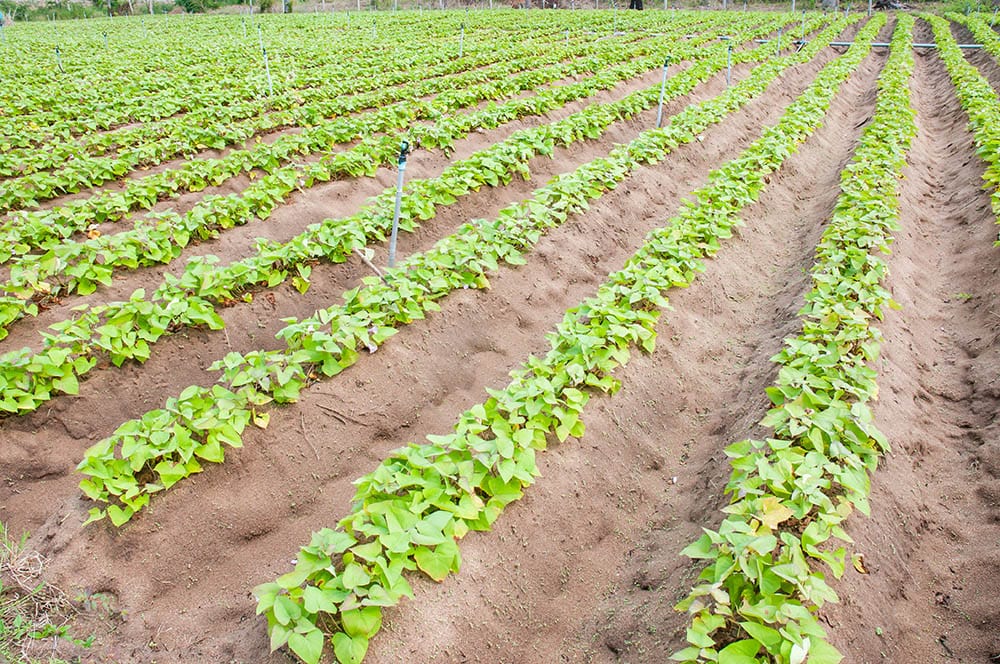
Sweet potatoes grow best in mounds of loose soil. You will want to build a mound for each sweet potato slip that you are planning on planting. The mounds should measure 6 inches tall and 12 inches wide. Be sure to keep at least 36 inches between mounds to give the plants room to spread out and vine without being crowded.
Build the mounds out of planting soil and natural soil. Do not pack the mounds tightly.
2. Plant Slips

After your mounds are built, it is time to plant your slips. Make sure that the soil is at least 60 degrees F before planting. Take your slips and bury the bottom end with the roots facing downwards in your mounds. Break off any leaves that are growing too close to the roots. You are going to want to bury the stem all the way up to the top leaves of the plant. Do this for each sweet potato slip.
3. Water In Slips
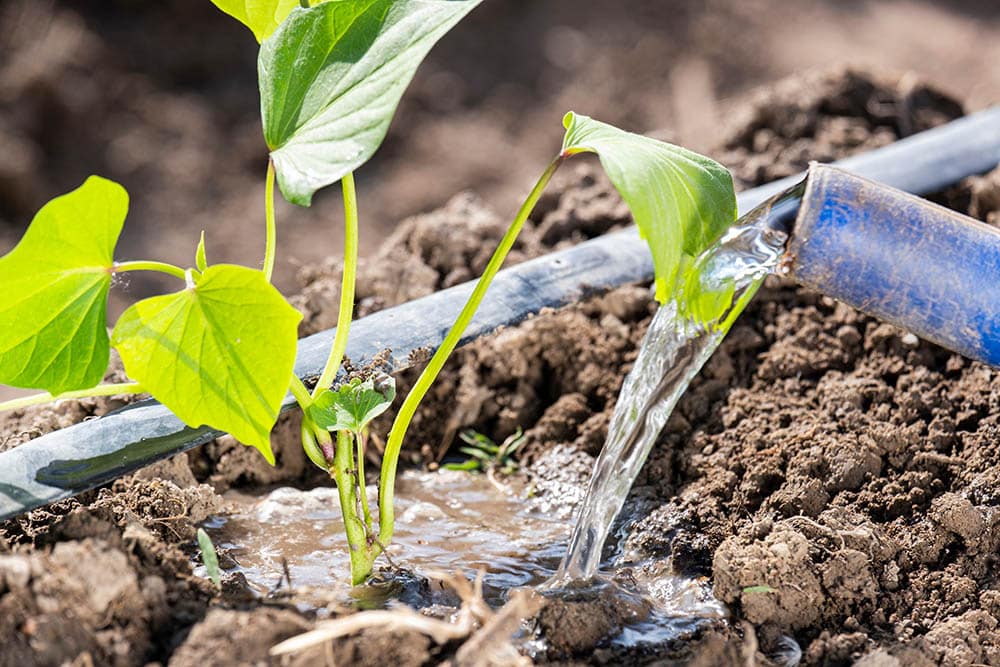
Once the slips have been buried, it is time to water the plants in. You are going to want to give the plants a good soaking after they are planted. Soak each mound and all of the surrounding soil until water starts to pool on the surface. New sweet potato plants need a lot of water. Plan on watering your plants daily for the first 7 to 10 days and then every other day for the next 2 weeks. Underwatering new plants is one of the most common ways to harm their development.
4. Monitor

After the slips are planted and have taken root, it is time to monitor the plants. Sweet potatoes take 90 to 120 days to mature. During this time, you want to make sure the plants have enough water and that they are not crowding each other or suffering from pests or diseases. Make sure the plants continue to look green and are growing properly for the next three months and adapt your strategy if the plants stop thriving.
5. Harvest
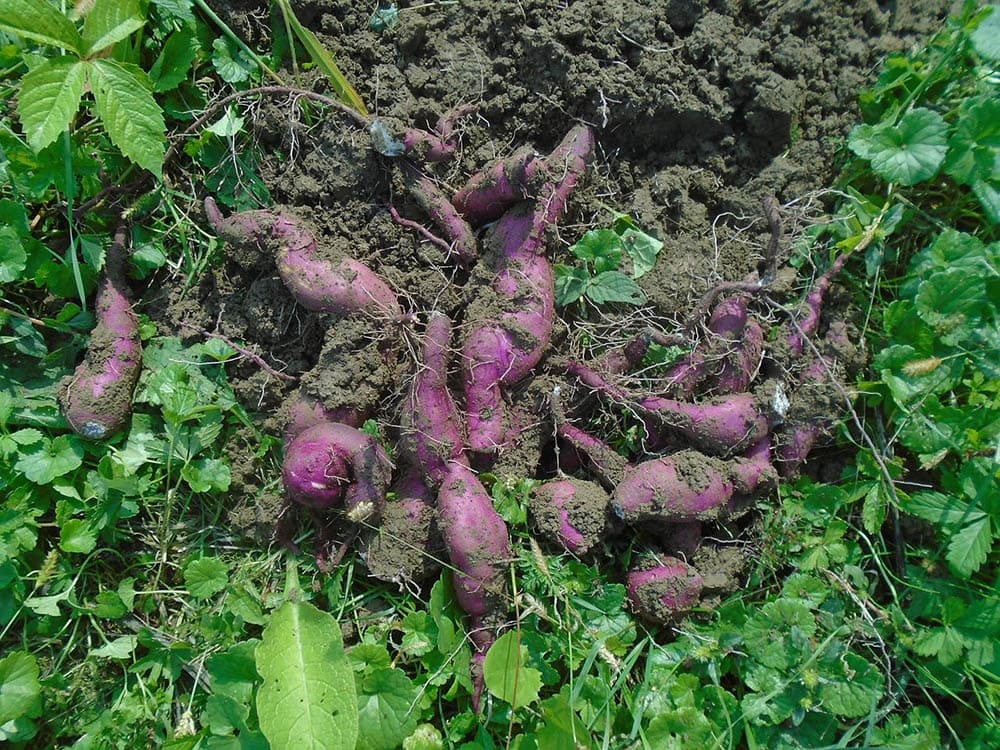
After the growing period is over, it is time to harvest. Gently break up the soil above the potato tubers with a shovel. It is best to wait until the soil is dry to dig up your sweet potatoes. Do not dig too deeply or vigorously or you risk nicking your potatoes.
Uncover the buried tubers and then pull them out of the dirt with your hands. Give them a good shake to get the dirt off and set them aside. You now have sweet potatoes ready to cook and eat at your leisure.

The Best Time To Plant Sweet Potatoes
Sweet potatoes are a southern plant that thrives in warm climates. The window for planting sweet potatoes usually opens two weeks after the final expected frost of the season. Sweet potatoes need at least three months of warm weather to grow properly, and they do best with four full months of warm weather.
Northern Climates
In northern climates, the window for planting sweet potatoes can be tricky. If you plant too early, you risk having your potatoes freeze in an unexpected frost. In some northern areas, the last frost might not come until May. Planting sweet potatoes in June gives your plants the best window to thrive before the coming of the next frost in the fall. In cooler areas, always hedge your bets against a frost. If you think you are going to get another wave of cold weather, do not plant. One frost will kill your sweet potato crop overnight.
Southern Climates
In southern climates, the window for sweet potatoes is much more lenient. The last frost in southern areas might come in March or even earlier. That gives you a solid window to plant that goes from March through June. The first frost of the fall often doesn’t come until October or later in some places. That means you can plant at any time from March until July and still get a good crop before the next cold snap.
For this reason, sweet potatoes are often grown in the south rather than up north. However, there are sweet potato varieties engineered to grow in northern climates with short summers.
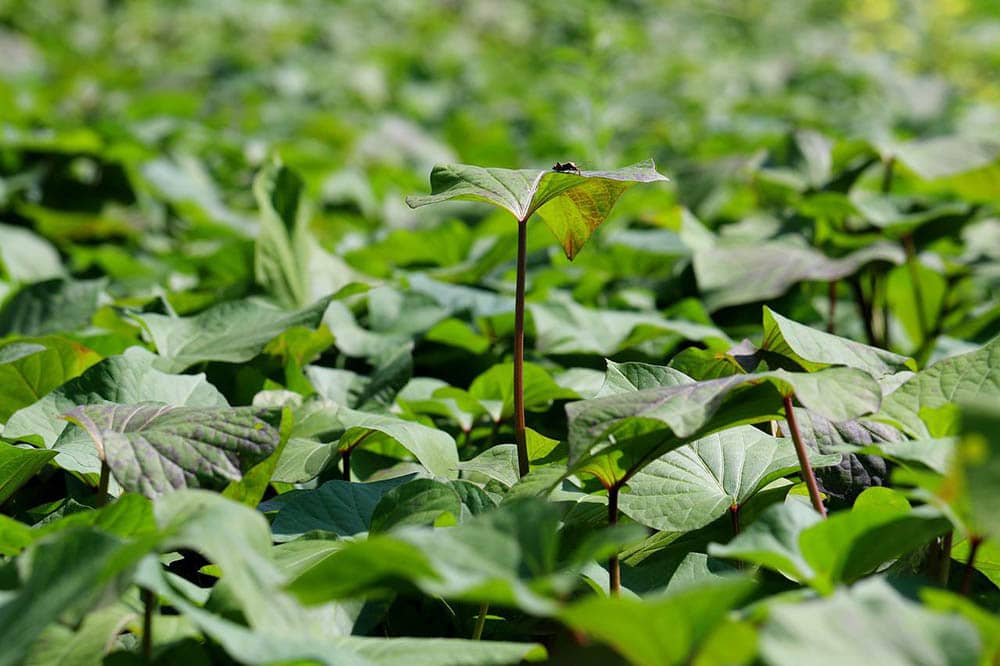
Common Sweet Potato Pests
When growing your sweet potatoes, you should keep an eye out for a few pests. Sweet potatoes are susceptible to three types of decay and rot; stem rot, sweet potato scurf, and white rust. If you see any signs of rot, white fungal disease, or other odd colors forming on your plants, you should treat them with an antifungal.
In addition to that, there are two types of insect disease that sweet potatoes can suffer from. Sweet potatoes attract flea beetles and whiteflies, which will eat and damage your plants. If you see these infestations on or near your crop, you will want to treat them with a pesticide to prevent loss.
Tips For Harvesting Sweet Potatoes
Wait at least 90 days before attempting to harvest your sweet potatoes. After the 90 days have passed, wait until the ends of the sweet potato leaves and vine begin to turn yellow or brown. This shows that the plant is ready for harvesting.
If you want to check on the status of your tubers, you can gently remove the top layer of soil over the potato to see how big it has gotten. The potatoes can be harvested at any time after 90 days. Once you deem the potatoes big enough to eat, you can harvest them.
Finish all of your harvestings before the first frost of the fall. Any frost will kill the sweet potatoes, even mature ones.
When you are harvesting or checking your sweet potato tubers, be careful not to break the skin of the potato. Breaking the skin can cause rapid spoilage, which can cause the plants to rot before you are ready to eat them.
Don’t be afraid of a little dirt. The dirt won’t hurt the potatoes or you.

Difference Between Sweet Potatoes and Regular Potatoes
Despite sharing a name and a general similarity in appearance, sweet potatoes and brown potatoes are extremely different. Sweet potatoes aren’t even related to a typical potato. Regular potatoes are in the nightshade family and like cold climates. Many potatoes are grown in places such as Russia, Ireland, and Idaho, which feature vastly different climates than the ones sweet potatoes grow in.
Sweet potatoes are tropical plants that are part of the morning glory family. Sweet potatoes like warm, humid climates with long growing seasons and lots of sun. Regular potatoes like cold soil, while sweet potatoes require soil that is at least 60 F.

Conclusion
Sweet potatoes are delicious and can be cooked and enjoyed in a variety of different ways. They can be baked like a typical potato or cut into fries. They go great as a side with many meals and are scrumptious with a little bit of brown sugar. With this guide, you will be able to grow and harvest your very own crop of sweet potatoes for you to enjoy come fall.
Featured Image Credit: Sergiy Akhundov, Shutterstock
Contents

